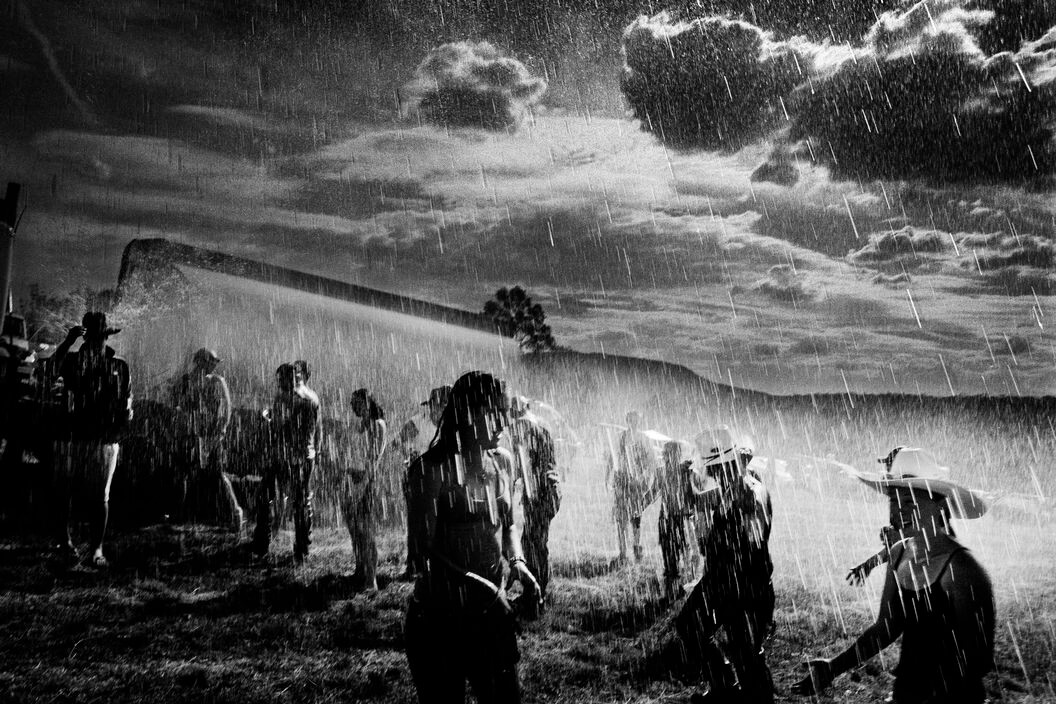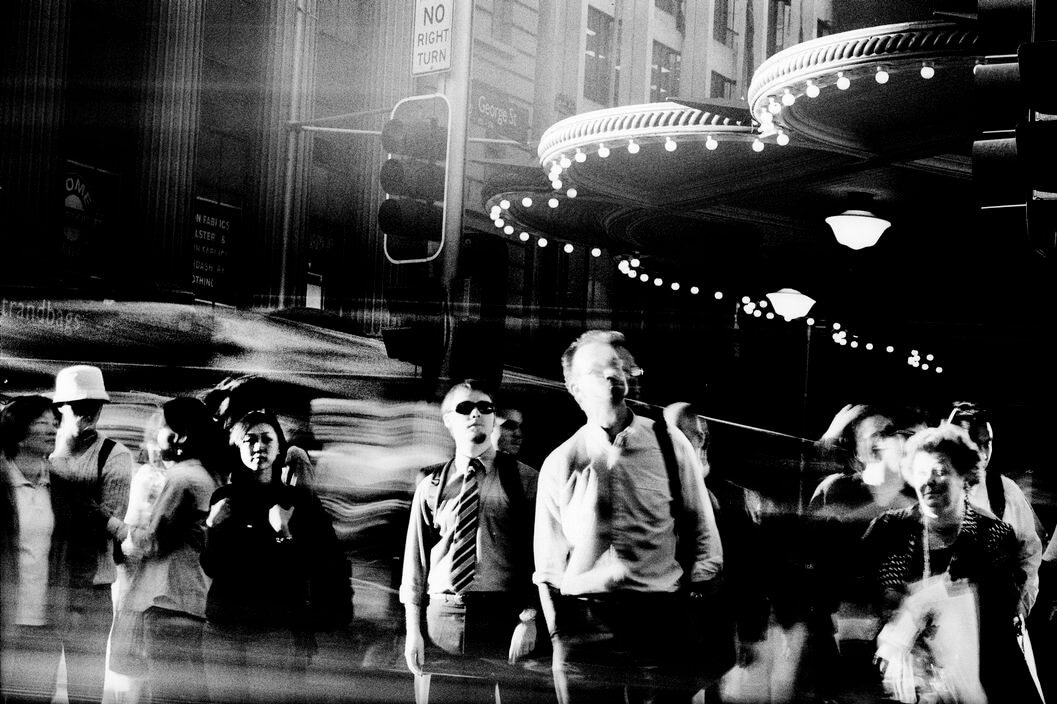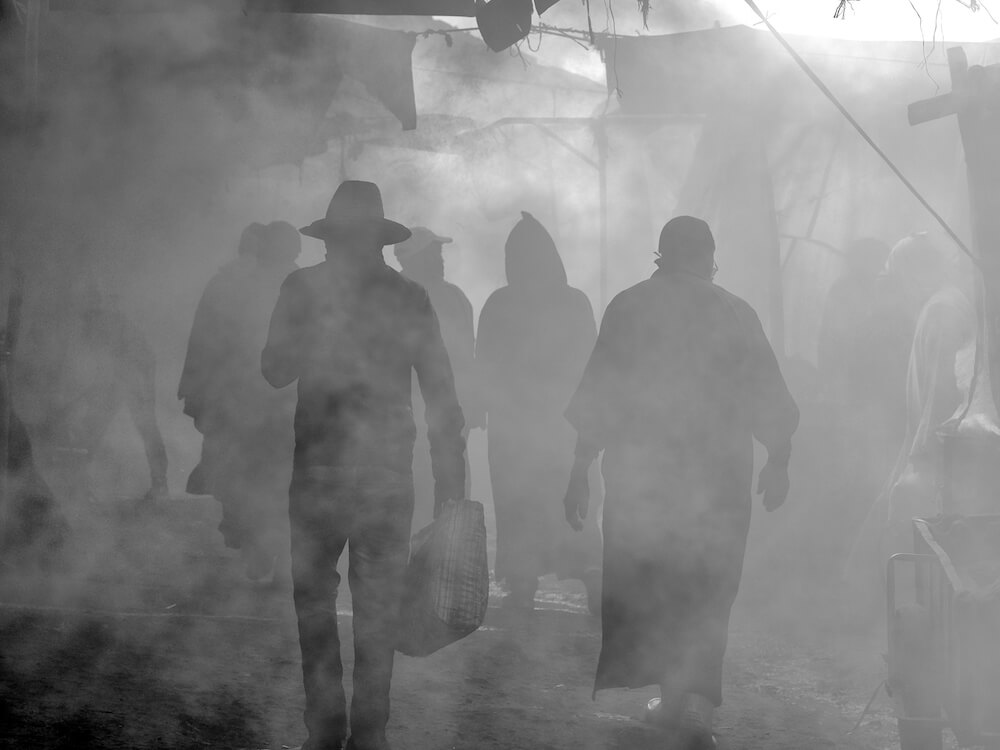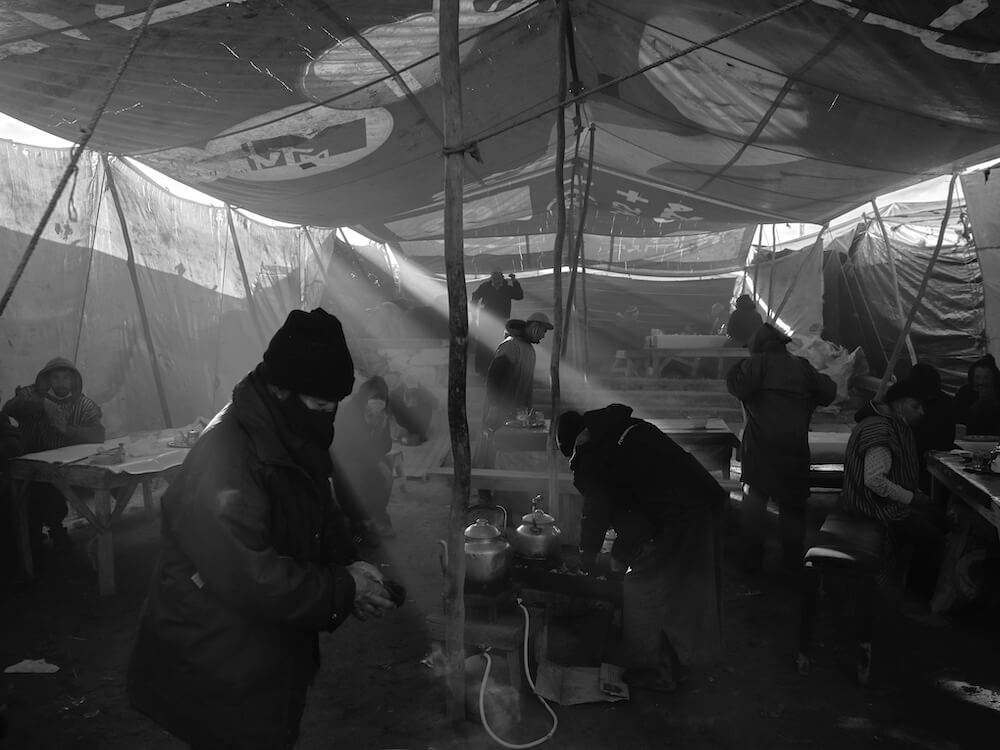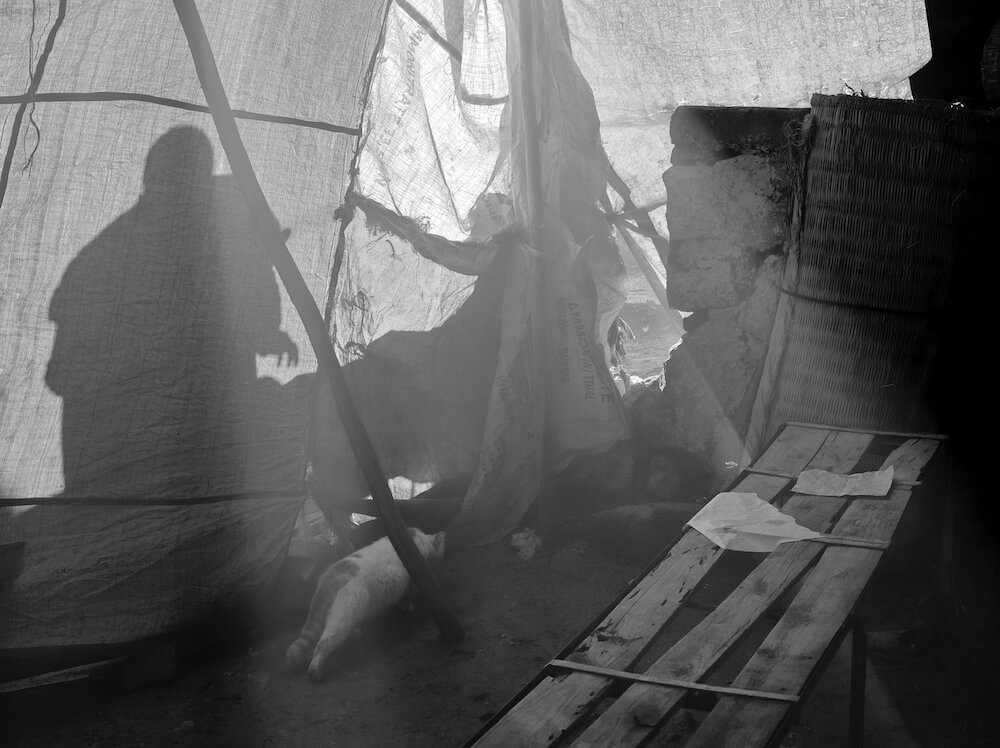Single images, however good, will be limited by their individual reach whilst their storytelling potential is held back. As viewers we are often, although not always, looking for connections and meaning and as creators, we should be aware of this when putting together a series. Certainly, good sequencing is a route towards this but there are other levels which tap into photography’s unique visual language. Storytelling through photography, where the images really connect and do not require text is the summit.
STORYTELLING THROUGH PHOTOGRAPHY
Develop storytelling through photography by connecting your images
Magnum photographer Trent Parke
In the work of Trent Parke’s Minutes to Midnight, his photographs both individually stand up as wonderful self-contained images and also work as a sequenced set. Images bounce off each other, but there is another level at play. His photographs require almost no supporting text to flesh out their narrative. The key test for this is to first view his images without reading the project statement. Reaching a conclusion that matches his intention is a rewarding experience. Try it with other project collections and you’ll discover how many photographers or photographic artists need to load the viewer with concepts for a complete understanding. They may in fact desire to leave interpretation open which is also valid, but perhaps this route is not as difficult to achieve as the former.
Approaches to convey a theme
Trent Parke instead conveys a theme through the wide coverage of different locations, subject matter and visual approaches. He uses storytelling through photography to tell the bigger story, not one related to time and place as in the photojournalist toolkit but closer to the freedoms that graphic artists or storyboard artists have at their disposal. His projects are huge in scale and not necessarily a template that mere mortals can follow, but we can use his influence to guide us in our own more modest image-making.
Identifying atmosphere
One of Parke’s key traits in his Minutes to Midnight project (2004) is finding atmosphere as seen through the variety of different (mostly natural lighting). The atmosphere is certainly a desirable quality to have in our photos. Misty landscapes, smoke-filled rooms and the distinctive qualities of early morning and late afternoon light all have that. Finding a few locations with one of the above is a good starting point for a series or project.
Creating a story
Finding a unique story to tell is the hard part. I believe it has to come from within and organically through following your interests, and so this will take time. Enjoying and exploring with your photography is the way forward for discovery. Profound themes that emotionally reach out are most likely not on your radar, so thinking more modestly is the perfect starting point. Here, you can identify one or two locations and make a series from them. What you are ideally looking for is to find and nurture the subtext, to create a series that transcends the descriptive.
In smaller locations this is challenging but ultimately rewarding. In this set of a smoky market location in Morocco, the ongoing series looks at different facets of the place but keeps the constants of light and smoke. The combination of the setting’s visual look (smoke and light) as well as time (Covid 19 mask wearing), means the story points to an apocalyptic vision.
A descriptive story of the place across a set can work well enough on one level but individual images play their role to extend a story theme. In the case of the market, the apocalyptic theme is reinforced through references to the films Blade Runner and Nosferatu. These associations are not thought of on-location but discovered after processing and reflecting on the images. Don’t forget that viewers bring their own cultural connections to the reading of photographs. This crossover beyond what you think you’ve taken and the element of surprise is part of photography’s magic.
Variety and coherence
When storytelling through photography, it’s important to think about how the images fit together to create depth and variety but also one that cohesively holds together. Using various focal lengths and revealing different elements in the location will build in variety and allow you to push a story forwards. In the smoky market series, both wide-angle and telephotos have been used, but not so that each is obviously at play. They have been subtly employed to reveal layers within the location.
Where to begin
Looking ahead to your own storytelling, it’s perfectly natural if a story doesn’t appear at first when you visit a new location or root around an idea you have in mind. As Paul Graham mentions in his 2009 essay:
“Yes, but shouldn’t I have a clear coherent theme, surely I have to know what I’m doing first? That would be nice…you shouldn’t expect it. The more preplanned it is the less room for surprise, for the world to talk back, for the idea to find itself, allowing ambivalence and ambiguity to seep in, and sometimes those are more important than certainty and clarity.”
Darren Lewey organises annual trips to the Atlas Mountain communities to develop storytelling skills. Find out more.
